As the tour group enters the Olivier Theatre, the spotlights surrounding the stage start to swivel, illuminating the vast performance space. It’s part of the preparations for the evening’s performance of Hex – a new musical based on Sleeping Beauty – and as if on cue, a glittering gold castle gracefully descends from above. Sitting in the empty circle, it’s a magical sight, but it takes a lot of technological prowess to make it happen. In the Olivier, that comes in the form of a 27-metre computerised fly tower – a lifting contraption so strong it could (theoretically) suspend a double-decker bus above the stage.
This fairytale flourish is just the beginning of the National Theatre’s backstage tour, which takes in all three auditoriums before navigating a labyrinth of dressing rooms, rehearsal rooms and workshops – all areas the average audience member rarely has the opportunity to access. The backstage tours are exclusive to American Express® Cardmembers who pre-book in advance and take place every Saturday afternoon.
Each tour starts with a bit of history about this iconic venue. As the group sinks into the plush purple seats of the Olivier, guide Anastasia McMeeking starts by acknowledging how the Brutalist structure that houses the National Theatre has divided opinion since it opened on London’s South Bank in 1976. In fact, the concrete cultural hub regularly appears on lists of Britain’s most loved and most hated buildings. Like it or loathe it, there’s no denying the ambition of architect Sir Denys Lasdun’s vision, who set out to provide audiences with an antidote to the ornate grandeur of the West End.
Three Theatres For Every Kind Of Production
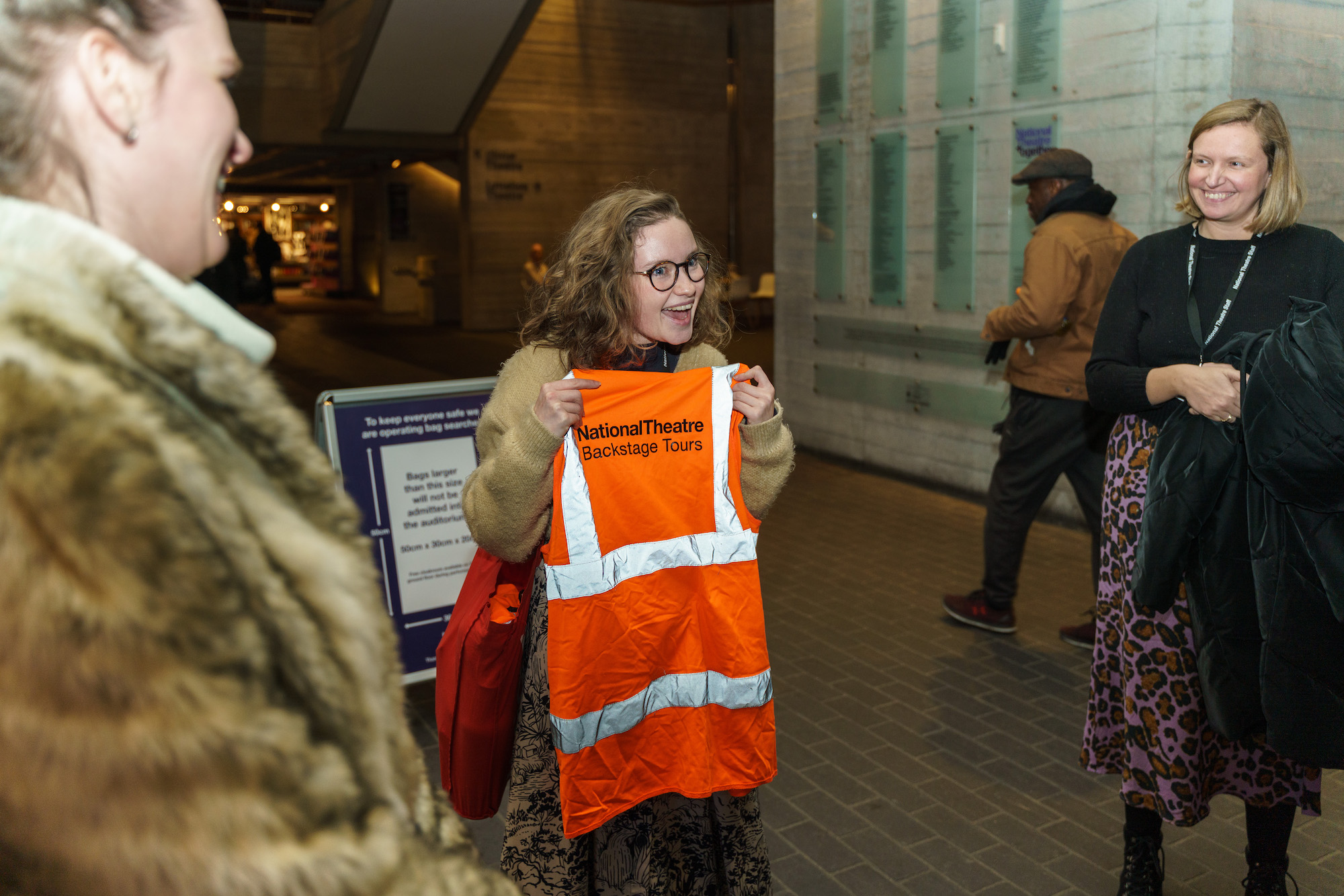
Guide Anastasia McMeeking welcomes Cardmembers to their exclusive backstage tour
Lasdun’s vision for the National Theatre resulted in three performance spaces, each with its own distinct personality. For example, take the Olivier’s fan-shaped auditorium, which promises an immersive, active viewing experience thanks to its excellent sightlines and acoustics. And while the ancient Greek theatre of Epidaurus provided the inspiration, its one-of-a-kind drum revolve is a modern marvel that enables two elevators to operate at either side of the stage for impactful set changes. If you caught Ralph Fiennes and Sophie Okonedo in Simon Godwin’s production of Antony and Cleopatra, you know this 160-tonne steel cylinder can surface a submarine.
Wandering past ‘employee only’ signs and through a maze of elevated walkways, the group arrives at the Lyttleton, where the sound team is testing the microphones ready for the cast of Othello to take to the stage. Anastasia invites everyone to admire its dynamic proscenium arch – which can close in on a single character or open out to reveal a whole ensemble – before the tour continues past rows of bright red dressing room doors.
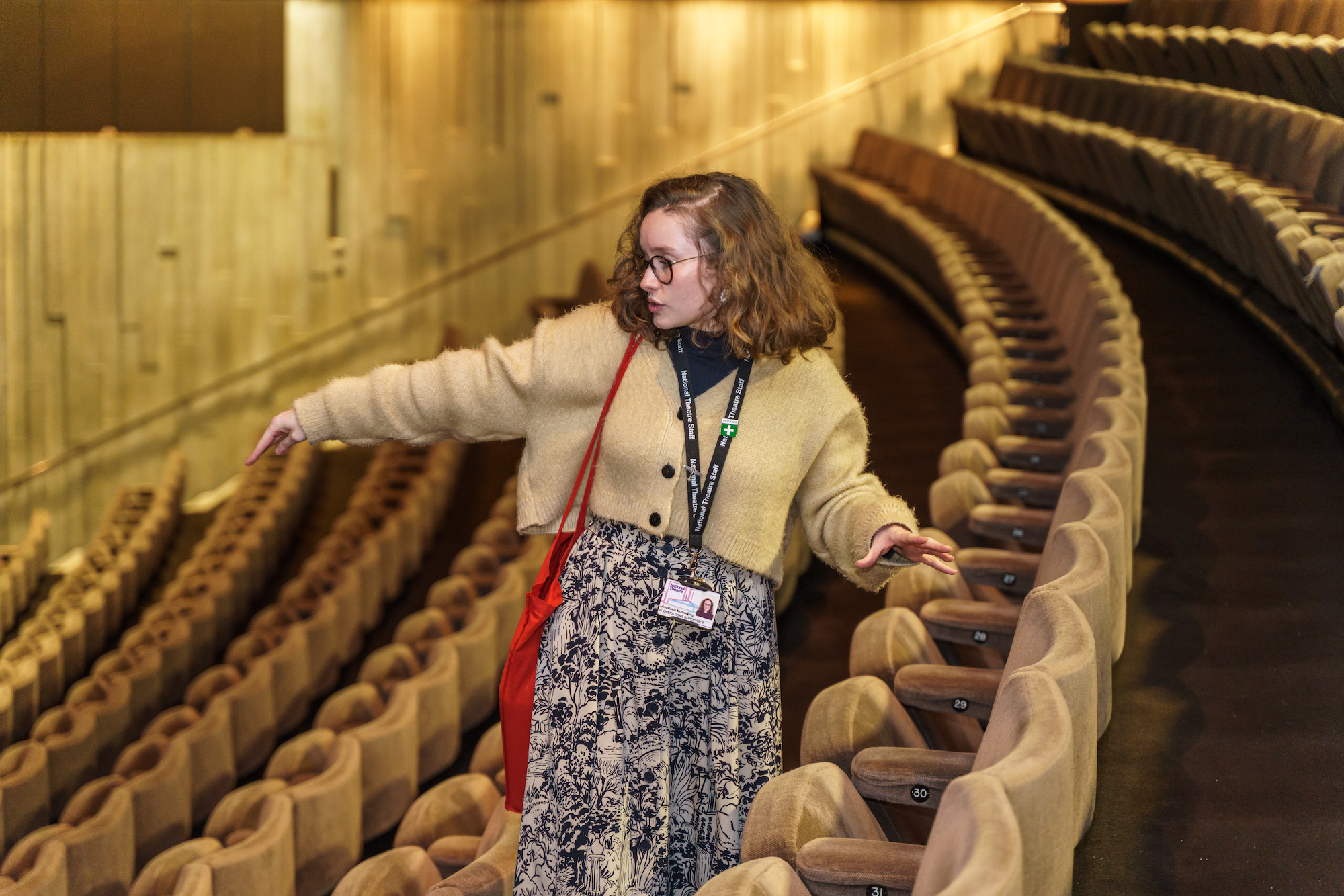
Anastasia takes the tour into the Lyttleton
All eyes are on the signs announcing the actors in residence, and everyone is poised for a surprise appearance or maybe even an impromptu photo opportunity.
Then, a third theatrical stop at the Dorfman reveals an intimate and experimental space that immerses the group in the cosy residential surrounds of one-half of the hyper-realistic revolving set for Kerry Jackson.
The National Theatre’s Inner Workings Revealed
The exclusive access continues as the group is invited to leave the front-of-house behind and discover some of the unsung stars of the show. In other words, the costume-makers, prop-builders and scene-painters who make the National Theatre such a full-production powerhouse. And because this includes a sneak-peak of upcoming sets, guests are politely asked to keep their phones in their pockets. This air of secrecy around the theatres and backstage spaces is something the National Theatre team are keen to preserve (including in the photos for this article) – but by attending a behind-the-scenes tour, Cardmembers don’t have to wait until opening night for the big reveal.
A scaffold bridge offers a fascinating view down Drum Road, a huge corridor connecting the light, sound and rigging departments. Crystal chandeliers, brass candelabras and metal lampshades hang from the soaring ceiling and serve as an eye-catching reminder of when Stephen Sondheim’s legendary musical Follies played here. The lights were assembled to give the set design team a choice, and they’ve been there ever since. Meanwhile, the armoury department is on hand to ensure every production goes off with a bang (if required) and is overseen by a huge portrait of Laurence Olivier himself, in a nod to the National Theatre’s first artistic director.
Entering the assembly area and the metalworking and carpentry workshops reveal an assortment of props and, through the floor-to-ceiling glass windows, it’s possible to spot the dining table and chairs for a much-anticipated production of Phaedra taking shape. Anastasia explains that each of the five acts of Seneca’s famous tragedy requires five sets, so the team have got their work cut out.
Onto the scenic painting studio and an aircraft hanger-size space where backdrops spread across the floor – meticulously detailed brick walls are drawn on canvas, bunches of reeds have been dipped in paint and left to dry. You can literally see 2023’s sell-out productions taking shape before your eyes.
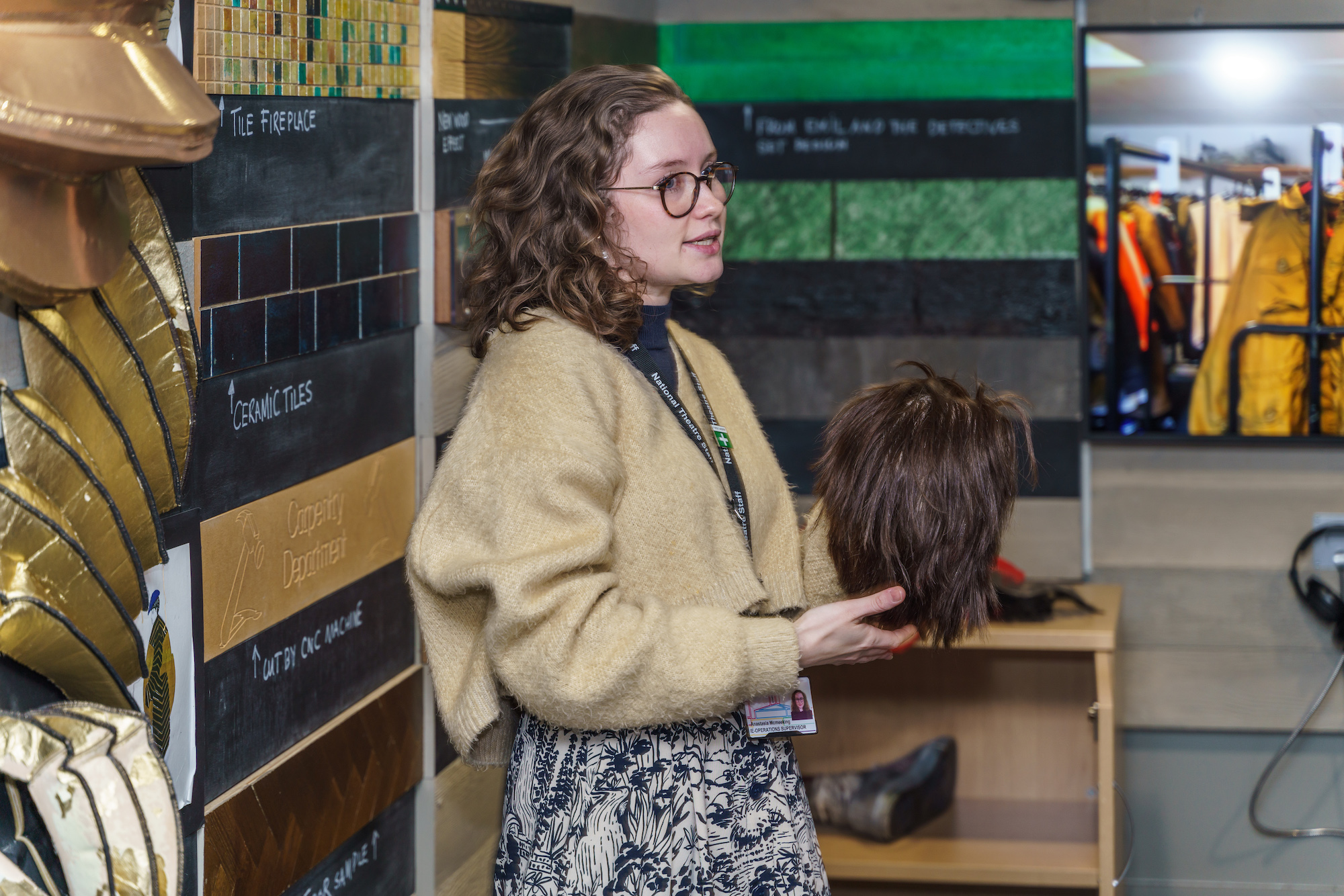
Anastasia reveals the scale of the National Theatre’s props and costume departments
As it enters the prop-making department, the tour takes a hands-on turn as Anastasia demonstrates the National Theatre’s commitment to sustainability. Holding up a piece of the mud-covered Irish peat that covered the stage in Translations, she explains how the team cleaned it, painted it gold and sprinkled it with sand for the island-based play Paradise – Kae Tempest’s reworked Sophoclean tragedy.
And while the actors who’ve trodden the boards here might tease each other to ‘break a leg’, no one imagined they would end the afternoon holding an actual leg. Ok, it was created for Peter Gynt – Peter Hare’s take on Henrik Ibsen’s play – but with its Converse-clad foot, it’s a striking testament to the props department’s skill. Anastasia encourages everyone to press on each individual toe, feel the ankle bone and appreciate its weight – it’s this kind of attention to detail that helps the actor keep in character.
The rehearsal rooms offer one last chance to soak up the atmosphere of these little-glimpsed spaces before returning to the bustling foyer. Here, the evening’s theatre-goers are shrugging off their coats, grabbing a drink and getting ready for whatever spectacle awaits them on stage.
Look out for the next exciting event or experience that your Gold Card can bring you, and remember your Card gets you exclusive presale and reserved ticket access at the National Theatre. Find out more and book your place on a tour here.

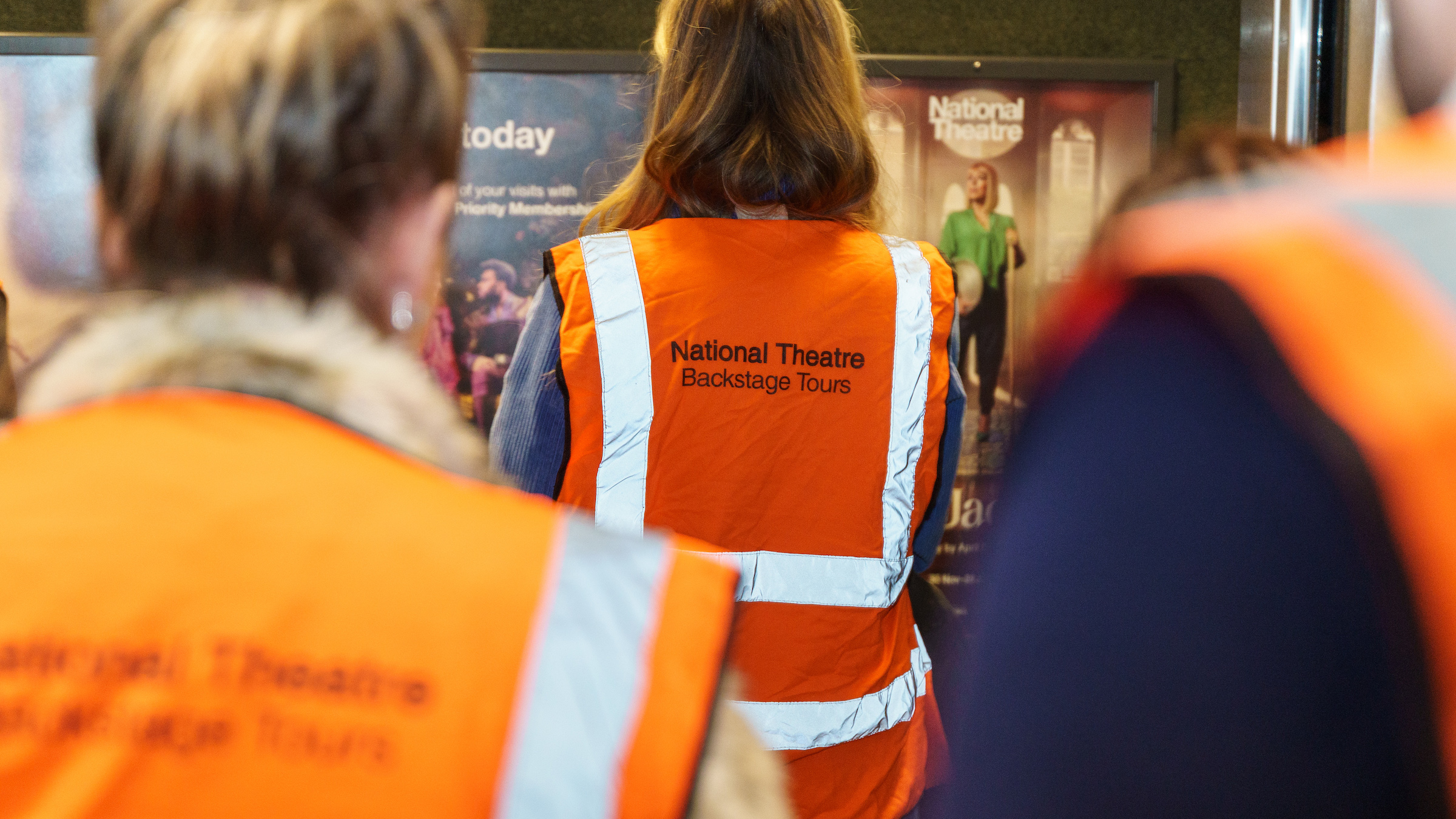
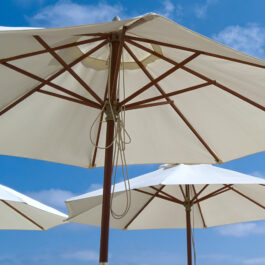
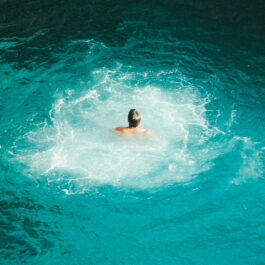



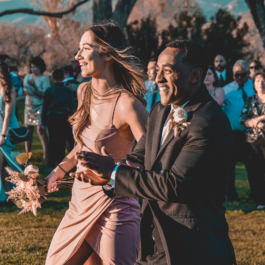
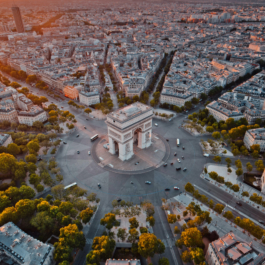
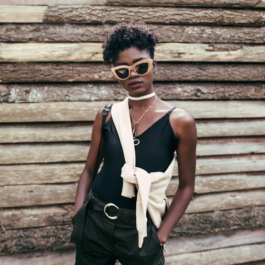


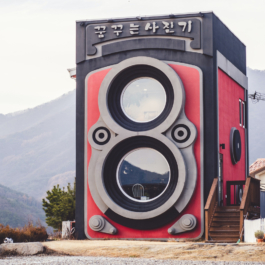
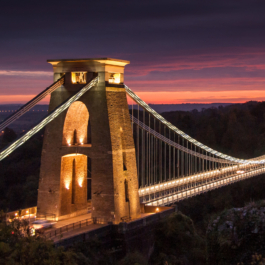
Sorry, the comment form is closed at this time.